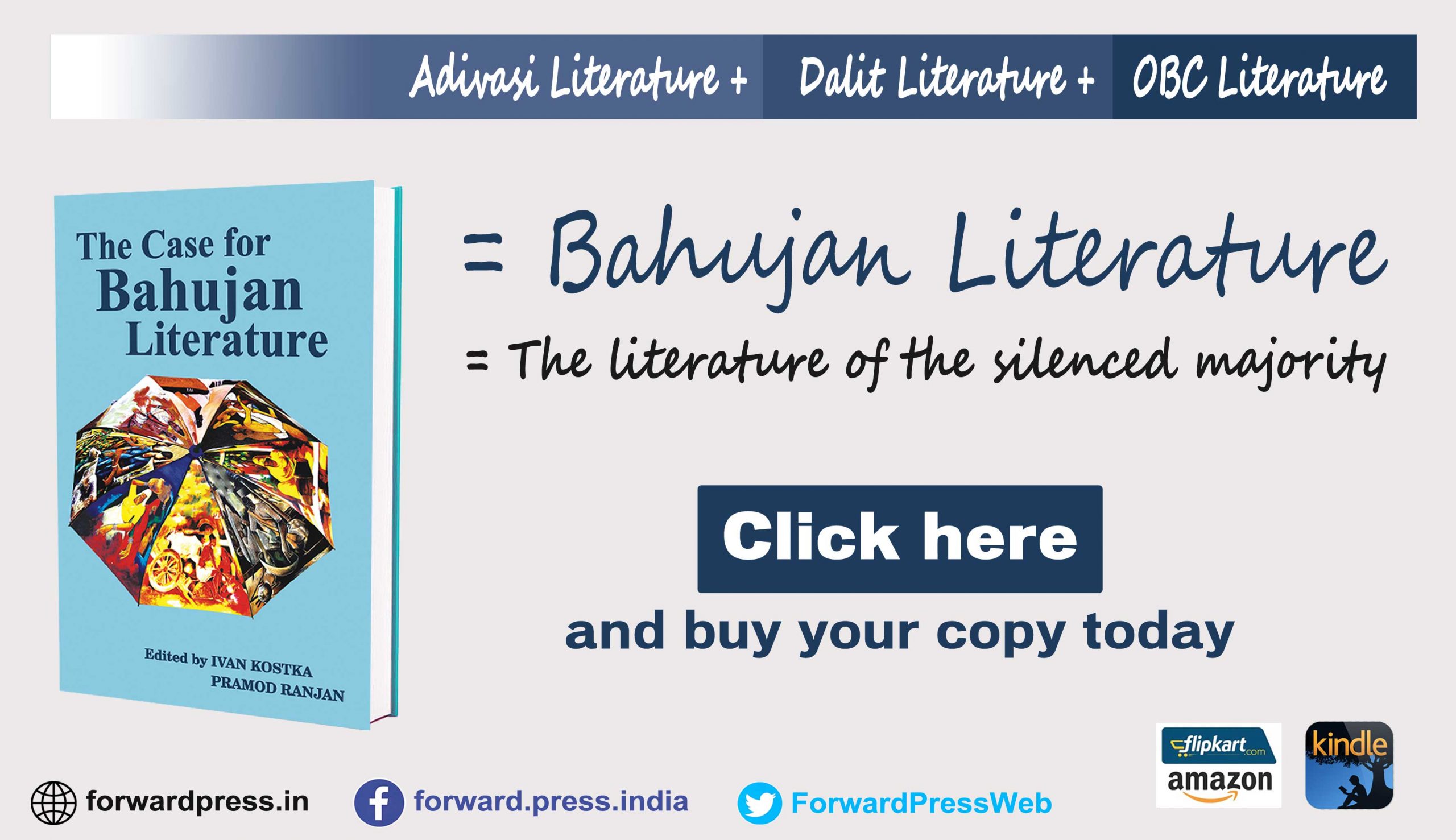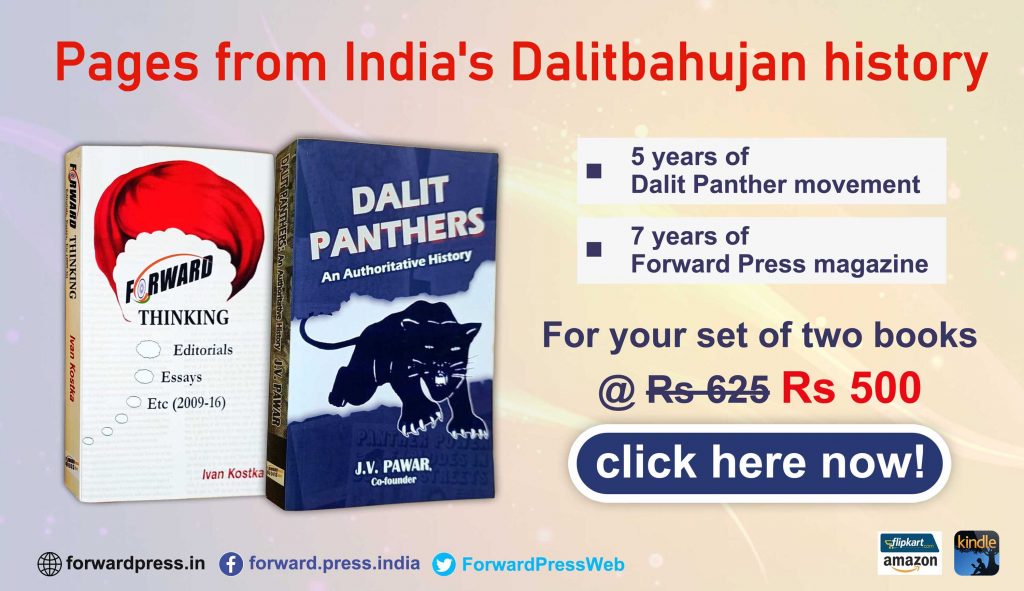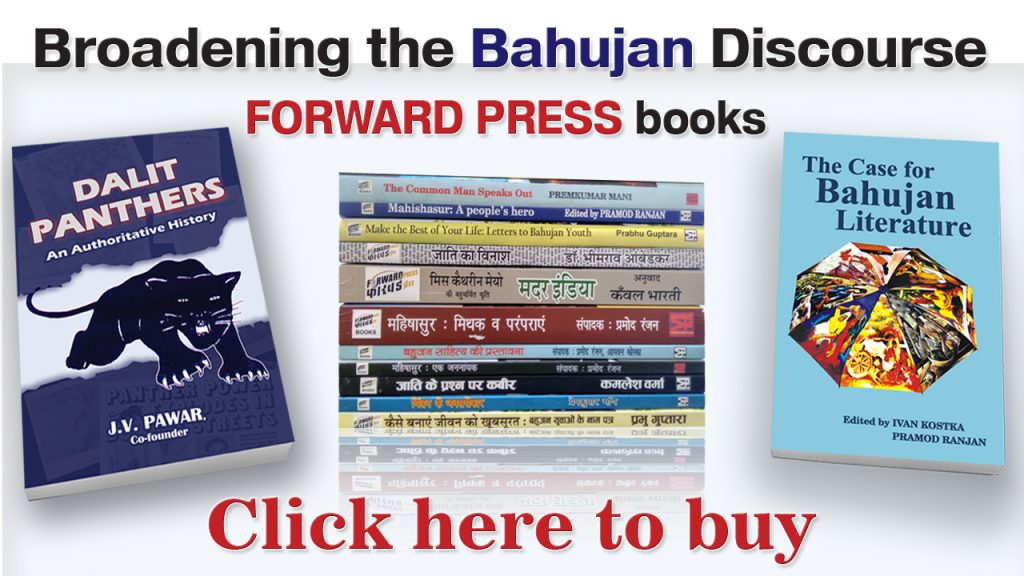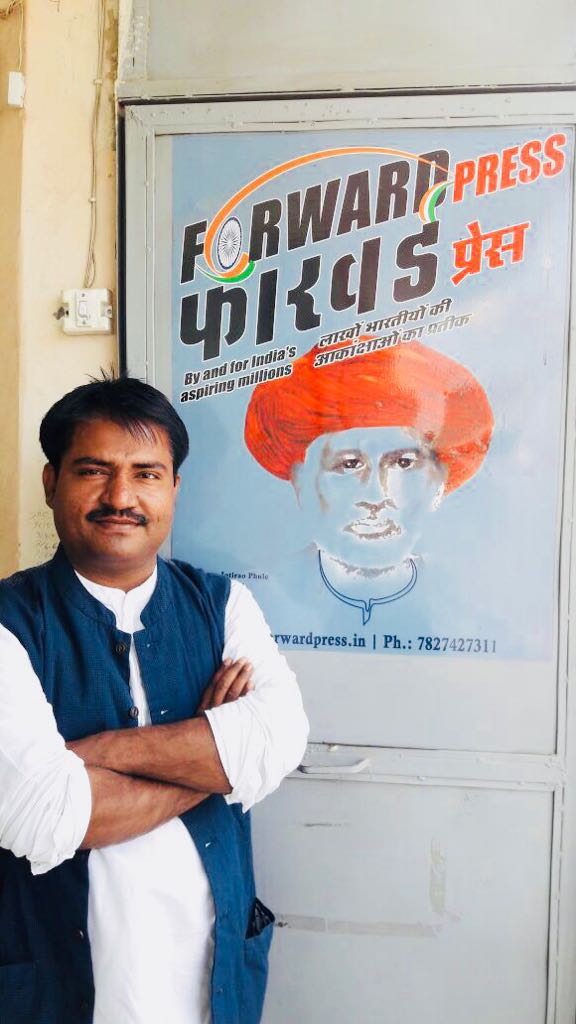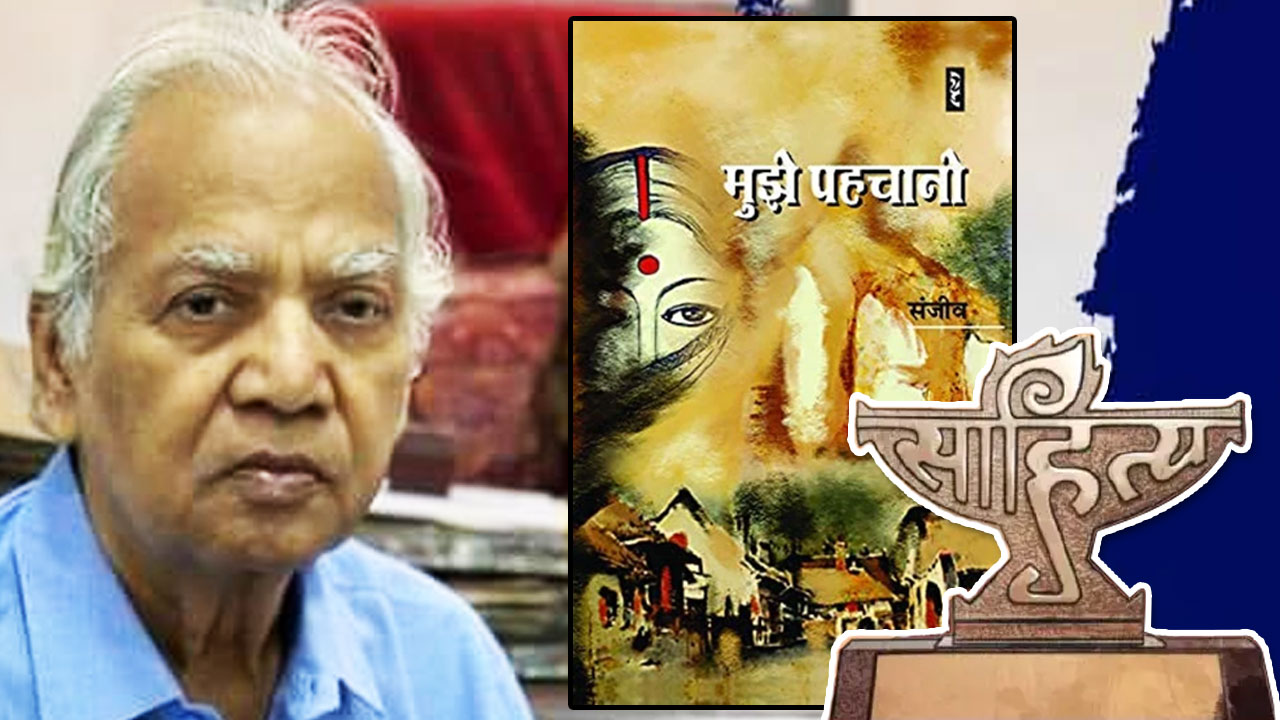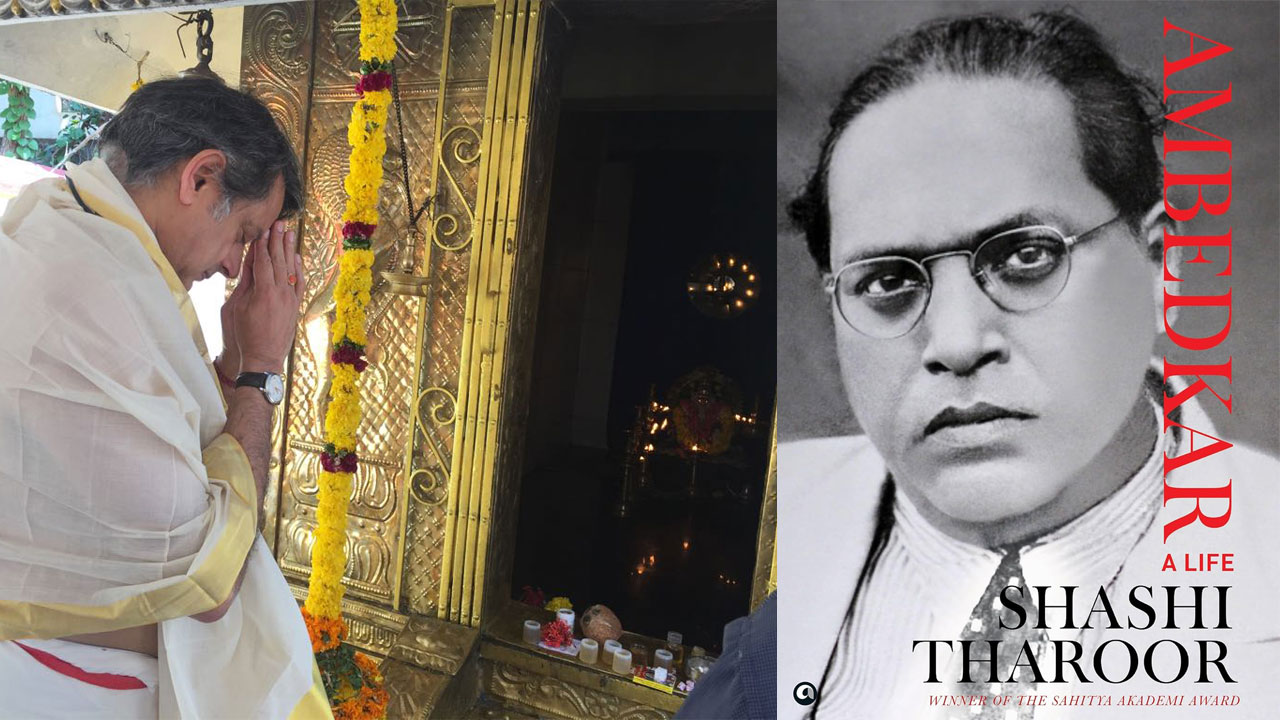Ushakiran Atram is a well-known Gondi litterateur. She lives in the Gadchiroli district of Maharashtra. She has written prolifically in Marathi, too. Among her published works are Motyarin (anthology of Gondi poems), Mhorki (Marathi poetry), Aher (short stories in Marathi), Ek Jhonka Anandacha (children’s songs in Marathi), Gondwana Ki Mahan Viranganayein (Hindi), Gondwana Mein Kachargarh: Pavitra Bhumi (Hindi) and Aheracha Badla Aher (Marathi play). Ushakiran Aatram spoke with Forward Press Hindi Editor Nawal Kishore Kumar. Edited excerpts:
When and where were you born? What is your family background?
I was born at Nandori village on 28 April 1954. My father was Dadaji Kushan Shah Atram and my Aayi (Marathi for mother) was Shalubai. My father was the son of a landlord who hailed from the Atram royal family of Chandagarh. My grandfather’s name was Sundarshah Atram.
Where were you educated?
I studied in my village Nandori (Taluka Bhadrawati, district Chandrapur) up to standard 7. At the time, our village did not have a high school. There were no pucca roads and no buses. As a child, I was very keen to study. My father inquired and sent me to Chandrapur, where I studied up to my graduation.
Did Chandrapur have a college and boarding facilities then?
Yes. The degree-college had a hostel.
Tell us about your pursuit of higher education and getting a job.
My father was relatively well off from my birth till my graduation. Then, a land dispute involving my grandfather and my family erupted and that drained our finances. My father and my grandfather pursued the matter in the courts for years. My grandfather’s land was usurped during the Maratha and the British rule. When I was a child, my Tai (wife of my father’s elder brother) used to tell us how our lands were grabbed and sold. My father wanted to educate me. Even as a child, I wanted to study. The financial condition of my family became dire when I was pursuing my bachelor’s degree. I worked in the fields of a nearby village to meet my expenses. Somehow, I got my degree.
What happened next?
Then I felt I should find a job because my mother was always unwell. We were two brothers and six sisters. I was the sixth child of my parents. Two sisters elder to me were already married. After matriculation, my elder brother joined the military and the other one went to Balharshah, where my sister lived, for further studies. One of my elder sisters was married off after she cleared standard 8. I was sent to Chandrapur, where I studied up to graduation. Due to my mother’s illness, the economic condition of my family had deteriorated considerably. Two of my younger sisters were studying in the village itself. I told them that the situation in the home was grim and that I would have to work to help our parents. I got the job of a gramsevak, a junior functionary, in Etapalli village. At the time, there were no buses to commute to the village, which fell in Chandrapur district. In 1982, a new district, Gadchiroli was carved out from Chandrapur and Etapalli became part of Gadchiroli.
So, your first job was as a gramsevak. When was that?
I was appointed in 1977.
Then, you became a teacher?
No. After working as a gramsevak, I joined the Child Welfare Department. Etapalli had a school that was only up to standard 10. I wanted to do post graduation and also a PhD. At the time, there were no facilities in the village – it was a forest, there were no buses and no electricity – so much so that the village did not even have a flour mill. There were problems galore. There was not one proper house. People lived in huts. With the help of local gram sevaks, I, too, got a hut to live in. The entire area was populated by the Adivasis – Gond Marias and Turras. It had a substantial population of Gond Marias. They were 89 per cent of the population of the area. The people there spoke both Telugu and Gondi. At the time, I did not speak or understand Gondi. I was a Marathi speaker. I had not even heard someone speaking Gondi. My father and mother used to tell me that in the past, Gondi was our language. In Chandrapur state, judgments were pronounced in Gondi. It was the official language. I felt that I should learn Gondi. I was very happy to hear what Tai and father told me. I decided that I would learn Gondi come what may. The village was in the middle of a forest. We travelled together in a vehicle. We never went alone anywhere. But I started visiting the neighbouring villages. The officers used to tell me, “Usha, you should meet the people in the nearby villages.” Gradually, I became friends with the girls of my age in the village. I was 21 at the time. I went to the villages with these friends. Sometimes, I would spend the night in these villages. We used to play dhols and gokul and sing songs. That was how I began learning the language. I was soon able to understand Telugu and Gondi. When I began visiting the villages, I discovered that the villages also had traders and moneylenders. The moneylenders used to occupy the land of the Adivasis. The moneylenders would lend money to them and make them do “begar” (unpaid labour) in return. The debtors worked for them all their lives. The debt was never cleared. The sons of the debtors’ and their grandsons continued working for the moneylenders. They never got freedom. Their debt kept on growing. There was nothing in writing. The moneylenders would say, “You had borrowed Rs 5. Now, it has grown to Rs 25.” The debtor would reply, “Yes sahib, yes maharaj.” In this way, the moneylenders looted the Adivasis – the moneylenders looted their land, their houses, everything they had.
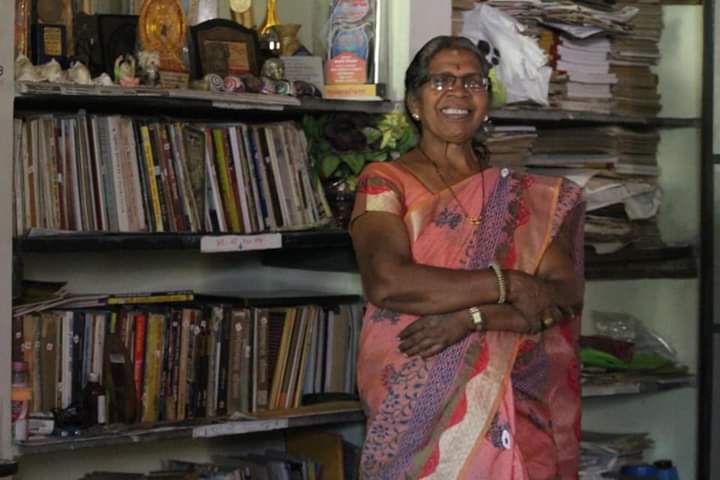
I also saw that the moneylenders used to beat the Adivasis. I was witness to one or two such incidents. My short story Baja is based on one such incident. Baja used to work for a moneylender. He was dumb – he could not speak. The husband and wife worked at the moneylender’s from morning to night. One day, the moneylender’s “reda” (male buffalo) died. The male buffaloes were used in farming. The moneylender yoked Baja to the plough in place of the buffalo. The next day, Baja was running a high fever. But the moneylender still wanted him to work. He went to Baja’s house, pinned him to the ground and began beating him. He wanted to know why Baja had not come to work. Baja could not protest. He couldn’t speak. His wife said he had a fever. The moneylender said that Baja owed him a lot of money. “If the debt increased, would his father pay up!” the moneylender retorted. After he regained his health, Baja found that his children hadn’t eaten for days and there was not a grain in his home. He went to the moneylender to ask for some rice and jowar. The moneylender locked him up in a room and thrashed him mercilessly. Baja died. All this I saw with my own eyes. People took out a march. Many people came from different places.
Where did this happen?
This happened in Hatpipli village. I wrote Baja, based on this incident, in 1980. I have referred to the incident in the book. The short story is part of the curriculum of Pune University. These were the kinds of things I saw there. I was deeply saddened to see the injustice being done to our people. What could I do? I felt that I should write something on it. I used to write poems off and on. But after going to Etapalli, I thought I should be writing more. I never looked back. I continued writing.
How did you come in contact with Sunher Singh Taram, the well-known scholar of Gond philosophy?
I first met him at a conference in 1985. Then, we met in three to four other conferences, including once in Bombay. As I was unmarried, he wanted me to propose to him. We had many common acquaintances. One of them told Sunher ji, “Ushakiran is not married. Why don’t you seek her hand? You will be a nice pair.” Sunher ji had married in 1977 but now he was divorced from his wife. My mother-in-law told me that his wife and her brother had got Sunher ji jailed on the charge of theft. He hadn’t remarried since and immersed himself in his work instead. Sunher ji went to Delhi. He did his studies there. When he returned, he launched a literary magazine called Gondwana Darshan as part of his social activism. He used to attend literary conferences as the editor of the magazine and that is how we met.
So Gondwana Darshan was already being published then?
Yes.
How did you decide to write in Gondi?
I used to write stories in Marathi. Then I met Sunher ji. That made things easier for me. In conferences, he used to say, “Gondi is our ancient and beautiful language. Its oral literature is rich. But there are no books in it. So, we should write in Gondi.” At the time, I used to write poetry in Marathi. Sunher ji would say, “Your book – your first anthology of poems – should be in Gondi.” My knowledge of the language was rudimentary. Kangali Tai (Chandralekha Kangali) and I used to work in the same place. They had a press in Gondwana, from where the monthly, Gondwana Darshan, was published. People from all over the country would come there. There were discussions and meetings. I took my poems to Kangali Tai. I wasn’t particularly happy with my work. Kangali Tai, Sunher ji and I made changes and improvements over a week and made them readable. That was how Motyarin, my first anthology of poems in Gondi, was published in 1993.
How is Gondi literature different from Hindi and Marathi literature?
There is a great difference between Gondi and Marathi literature or for that matter, literature of any other language. Gondi literature is primarily oral and is close to “Nisarg” – that is Earth and nature. The oral stories and poems that form part of Gondi literature are about nature – about stars, sky, Earth, water, forests, land, hills, rivers, birds and animals. The lives, the pains and the pleasures of the people are linked to nature. That is because they coexist with nature. Their forests, their lands, their kingdoms have been snatched away from them. Their history has been buried. They are still victims of exploitation and atrocities. Their literature still voices pain and anger.
I am a Marathi speaker. Marathi literature does not have as much attachment with nature or as much pain. This is also true of the literature of other languages. The anger against repression is not palpable in other literature. They are about ordinary people, their romances, etc. They talk about the life of the people. But their literature does not have the pain, the beauty of the language, the standards, the various facets of nature and her beauty, the aesthetics of life, birds and animals, love for land. Gondi literature has all of this. Gondi traditions, customs and festivals are very different from the others. Of course, good literature has been written in Marathi and in other languages as well but there is a lot of difference between our literature and theirs. We call this difference “achkanpana”. I come from their society. I have experienced their pain. I can express it through language. No other person can write about us. If I have had a stomach ache since yesterday, only I can feel the pain. Only I can write about it, you can’t. This is the difference between Marathi literature and Adivasi literature, Gondi literature.
The philosophy of Parikupar Lingo and Jango are part of Gond tradition. How has this philosophy been expressed in Gondi literature?
It is there in the oral literature. It is there in the folk songs and in the stories. Their festivals, their places, the names of their villages, their relationships with plants and animals – all are part of this philosophy. For instance, I live in Kachargarh. It is said that Lingo performed penance in the ancient caves of Kachargarh. He locked 37 children in the caves. They were taken out after 12 years. The “Goya Moro Geet” says that the children were educated and were sent to different parts of India to popularize the Gondi language. The places the oral stories talk about – their villages, rivers and rivulets, trees and nature – those places are still there. There is a village called Chand-Suraj near Kachargarh. There is an ashram of Jango Ma there. There is still a village called Jammu Puro. We had climbed the hill in Chand-Suraj village, atop which is the ashram of Lingo Baba.
Talking of the present – before Independence, the forest areas were controlled by the British and the brahmanical elements. Today, violence for control over forests, over its products, timber and minerals is very common. There is always one protest or another under way in the forests. I am talking of the entire Gondwana region. Do such movements and agitations find an echo in Gondi literature?
Yes. They do. For instance, it talks about the land of Gondwana. Our people used to rule Gondwana. This also finds mention in history. We had the power, we had our rules, laws, panchayats which delivered justice, village panchayats, gram sabhas – they had their different heads. Even today, in the area, gram sabhas are held. The old tradition of gram sabhas or village Mukhiya, Patel, Bhumka, etc – it is still alive, they are still there.
Who is a Bhumka?
The Bhumka is the person who performs the puja of gods and goddesses. Puja is called gongo in Gondi. The Bhumka performs the puja. For instance, at the time of sowing, he performs the puja of land. When it starts raining and there is greenery all around, that greenery, the green grass is worshipped. The village Kotwal informs everyone – “Today, we will meet here and discuss the puja.” Everyone goes there. The village Patel and Bhumka organize the puja. Similarly, when it’s time to sow seeds in the fields, everyone is called – everyone has to come and sow seeds. Then Bijapandum is performed. In Gondi, beeja stands for seed and pandum means festival. Everyone participates in the puja of seeds.
There are other Adivasi languages, too. For instance Santhali, Nagpuri and Kudukh are spoken in Jharkhand. Telangana has its own Adivasi languages. What difference do you find between the Gondi language and literature and of other Adivasi languages and literature?
There is not much difference. Only the dialect is different. All the tribes worship nature. They believe in the five elements of nature. They are not idol worshippers. They have a matriarchal society. They consider Earth as their mother. Birds and the animals are the emblems of their clans. This is true of all ganas. Similarly, when a marriage is to be held within the Gotra, there is this concept of Sam-Visham. Sam-Sam are brothers. You can marry into a family of Visham Gotra. This is true of all tribes. History tells us that ancient society was matriarchal. Mythological literature endorses this – we have Jango Tai, Kali Kankali Maa. There were many queen-warriors in the medieval era. Many queens who were capable ruled for 15-20 years. They fought to protect their kingdom, their land and their people. We find many such women. As the society is matriarchal, as mothers are worshipped, women are not subjected to any atrocities. There is no dowry system. Women are not burnt for dowry. If a woman’s husband harasses her, the panchayat listens to her. Women are respected. There is no concept of a widow there. Women are matrashakti (mother goddesses). How can they get widowed? When she comes to a family after marriage, she is called Kulvadhu (family’s bride). It is never said that she is a man’s wife. This is true of all Adivasi societies. Adivasi society allows widowed women to remarry. If she wants to marry and she says she likes a particular man, the people, the family – they get her married to that man. Widows enjoy great respect in pujas and in wedding ceremonies. Budhia Mata sits by the side of the groom and the bride while applying haldi. The Nauri-Naura (groom and bride) give her great respect.
How do you see the efforts being made to standardize Gondi language?
There are many reasons for standardizing the language. Sunher Singh Taram ji always used to say that Gondi has not been included in the Eighth Schedule. “The government argues that there is no written literature, no documents in Gondi. What has been written in Gondi? How many books? Nothing has been written. Then how do you say it is your language. How can we recognize it?” This is one aspect. The other aspect is that when the Gondwana land was divided up among various kingdoms, Gondi people were scattered in present Gujarat, Madhya Pradesh, Telangana, Andhra Pradesh and Karnataka. The languages of these regions influenced Gondi. Some people went to Andhra Pradesh. Telugu is the language there. Telugu influenced Gondi. Many Telugu words became part of Gondi. Milk is “doodh” in Gondi. It is “palu” in Telugu. But now palu is used for milk in Gondi, too. You will find many such words in Gondi. For instance, here, they say “hille”, meaning “no”; there, they say “sille”. So, minor changes have crept in. The Gonds who settled in Gujarati – their language has been influenced by Gujarati, in Karnataka by Kannada, in Madhya Pradesh by Hindi, in Chhattisgarh by Chhattisgarhi. In our Maharashtra, Gondi has been influenced by Marathi. So, many new words have entered the Gondi language. It was difficult to say whether hille is the right word or sille is the right word. One said, hille, another said sille. The one who used hille would ask what sille meant. He would be told that it means “no”. He would say sille also means “no”. When these words were standardized, we ended up with many synonyms. Your sentence now uses the main word – the word which comes first. In this way, many words have been standardized.
Due to standardization, the words which had come into Gondi from the other languages, became part of Gondi. Workshops were held on this issue for four years. Gondi speakers from 10-12 states, including Andhra Pradesh, Madhya Pradesh and Karnataka, took part in these workshops. One of the benefits of standardization was that the words that had become extinct, which had been replaced by other words, were back in the language. It would be better to use the same word everywhere. This has made our languages purer. It is back in its original form. Thus standardization has been very beneficial.
What kind of literature should be written for the expansion and development of the Gondi language? Should Gondi forge ties with Hindi to facilitate exchange of views, its expansion?
You are right. This should happen. You may write in Gondi or in other Adivasi languages but that will limit your reach. Only the Gondi speakers will understand it. If it is translated into Hindi, English or any other language, people will come to know about the form, the aesthetics, the richness, the grammar of Gondi. People will think – “Oh, Gondi is such a beautiful language.” So, it is necessary that Gondi develops ties with other languages. Translations are necessary.
(Translation: Amrish Herdenia; copy-editing: Anil)
Forward Press also publishes books on Bahujan issues. Forward Press Books sheds light on the widespread problems as well as the finer aspects of Bahujan (Dalit, OBC, Adivasi, Nomadic, Pasmanda) society, culture, literature and politics. Contact us for a list of FP Books’ titles and to order. Mobile: +917827427311, Email: info@forwardmagazine.in)
The titles from Forward Press Books are also available on Kindle and these e-books cost less than their print versions. Browse and buy:
The Case for Bahujan Literature
Dalit Panthers: An Authoritative History
